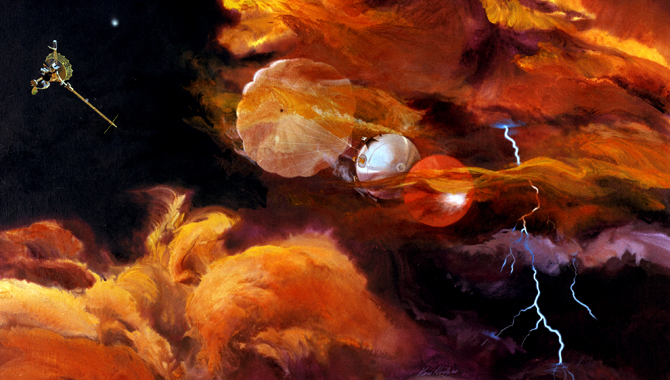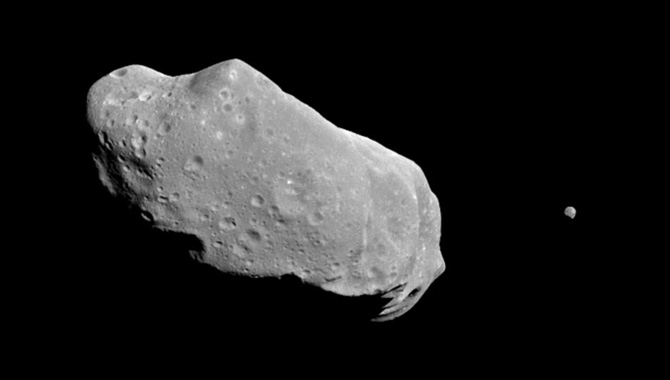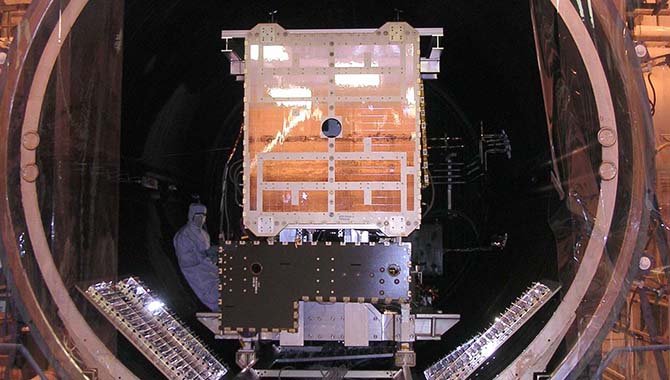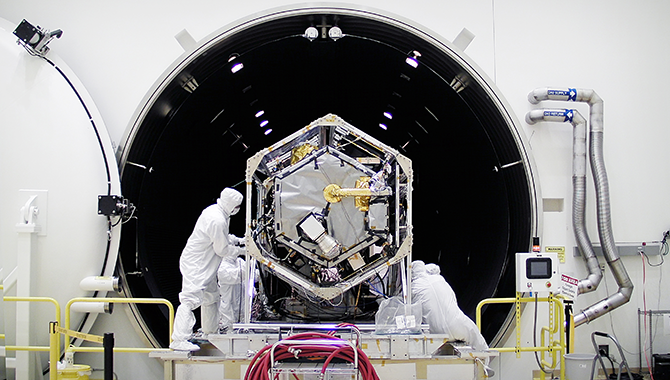
Ten years ago this month, the Galileo spacecraft deliberately ended its 14-year lifespan as it disappeared into Jupiter’s atmosphere.
On October 18, 1989, the Galileo spacecraft and probe launched to explore Jupiter and its moons. The spacecraft carried 10 instruments and sent back images of Venus, two asteroids, Earth, and its moon on the way to its final destination. Galileo’s accomplishments include being the first to fly by an asteroid, discovering the first moon of an asteroid, and observing the massive thunderstorms on Jupiter, the gas planet’s rings, active volcanoes on Io, Ganymede’s magnetic field, and possible oceans on Europa and possibly Callisto.
After completing its two-year mission to study the Jovian system in 1997, the spacecraft’s life was extended three years for additional studies. Afterwards, with its propellant nearly depleted, NASA’s ability to control the spacecraft was becoming limited. In 2000, the National Research Council issued a report recommending the Galileo mission end on a collision course with either Io or Jupiter in order to avoid planetary contamination of Jupiter’s nearby moon Europa with possible Earth life still attached to the spacecraft.
NASA opted for the spacecraft to terminate on Jupiter and on September 21, 2003, Galileo penetrated the gas giant’s atmosphere and disappeared.
While the accomplishments of Galileo are many, its path to Jupiter wasn’t entirely smooth. Galileo team member Erik N. Nilsen and P.A. “Trisha” Jansma reflected on the project and some of its challenges in their ASK Magazine story “Galileo’s Rocky Road to Jupiter.”
During the first two and a half years of the mission, the operations team communicated with the spacecraft via the first low-gain antenna (LGA), and a second LGA added specifically for communications during the Earth-to-Venus-to-Earth leg of the trajectory. On April 11, 1991, shortly after the first Earth flyby, the operations team at JPL commanded the HGA to open. After twenty minutes of anxiously waiting for the fully deployed signal, the project team realized that something terribly wrong had occurred, and the HGA mission was in jeopardy. An investigation team was quickly organized to determine the state of the antenna and find a way to rectify the problem.
Over the next two years, numerous attempts were made to further deploy the antenna. At the same time, the project commissioned a separate, multidisciplinary study team to investigate ways to continue the mission without the HGA. Radical alternatives such as launching a relay satellite were quickly discarded due to time and budget constraints, so the team concentrated on alternatives using the LGA to support Jovian orbital operations. The project’s worst fears were realized. All efforts to fully deploy the antenna were unsuccessful. The HGA was virtually useless.
Read the full ASK Magazine story.
Read an interview with Dr. Cassie Conley about planetary protection of icy bodies.
Learn more about APPEL’s Planetary Protection: Policies and Practices course.
Click to view full Flickr gallery.
An artist’s impression of the Galileo probe descending into Jupiter’s atmosphere.
Download: Fullsize
Photo Credit: NASA









